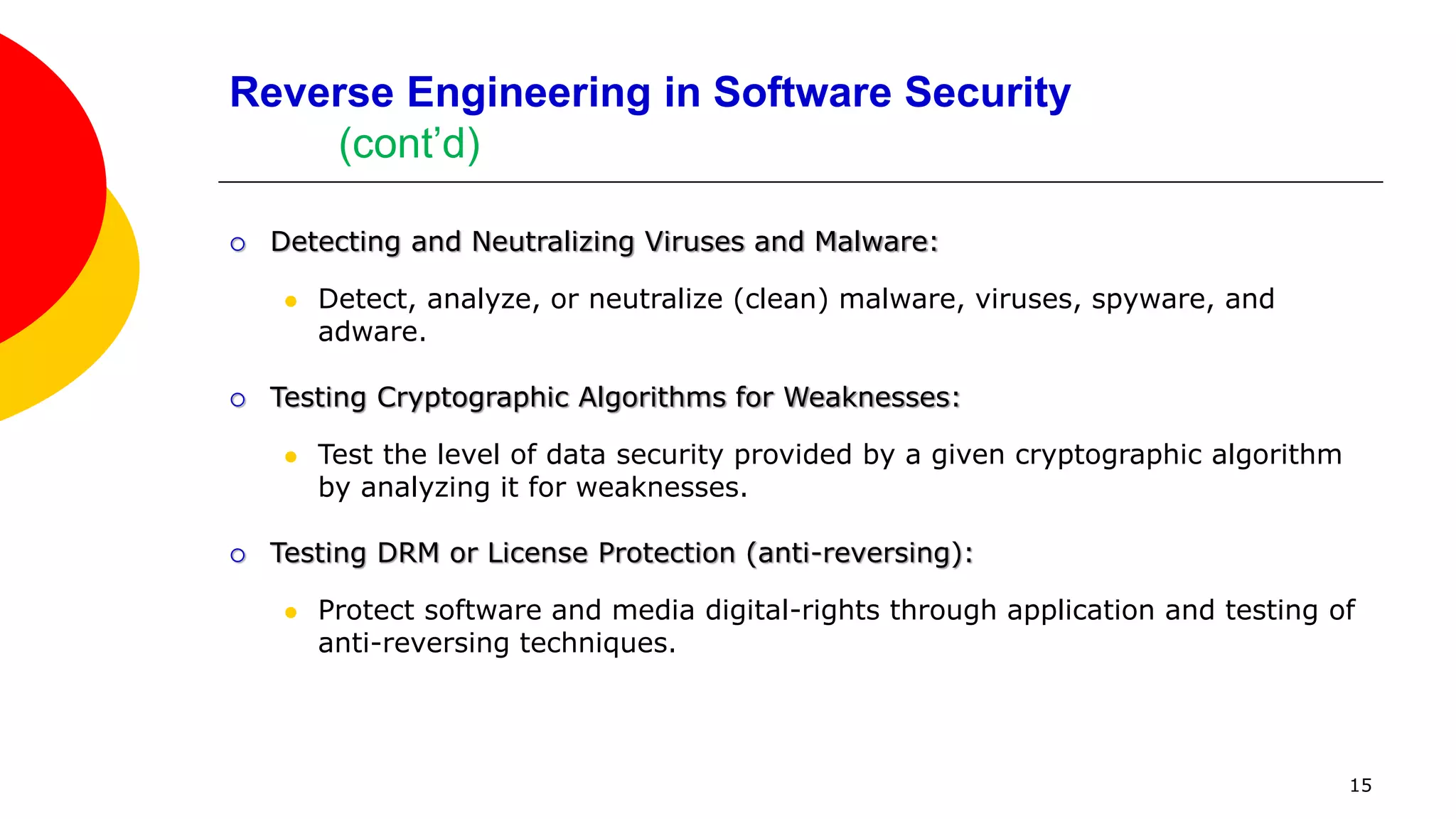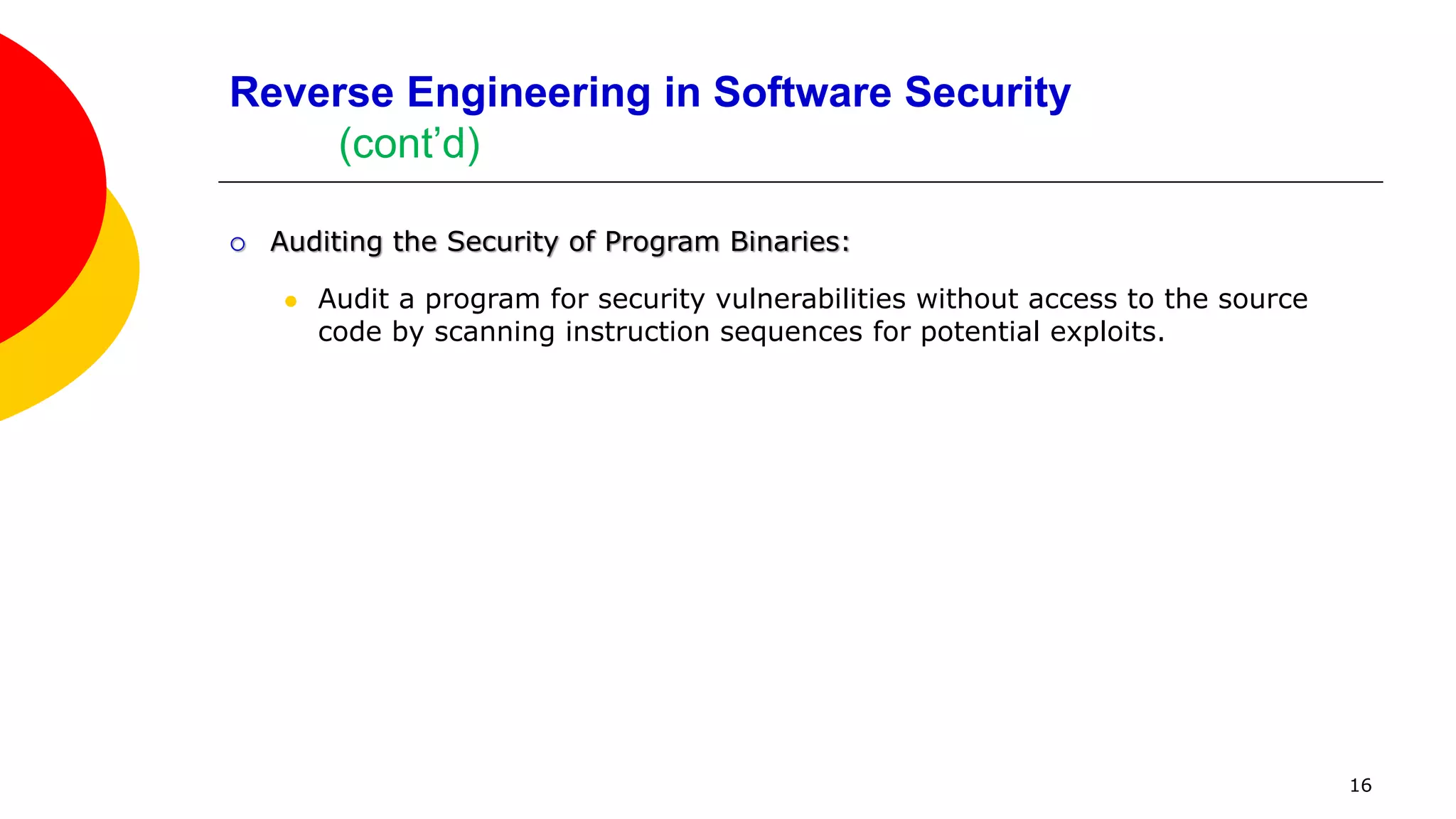The document discusses the application of anti-reversing techniques to machine code, emphasizing the importance of carefully modifying code to avoid malfunction while making it more challenging to reverse engineer. It explores methods such as eliminating symbolic information, obfuscating source code, and the complexities involved in machine code obfuscation. The presentation also illustrates practical applications of these techniques, including a password vault application and various obfuscation strategies to hinder reverse engineering efforts.
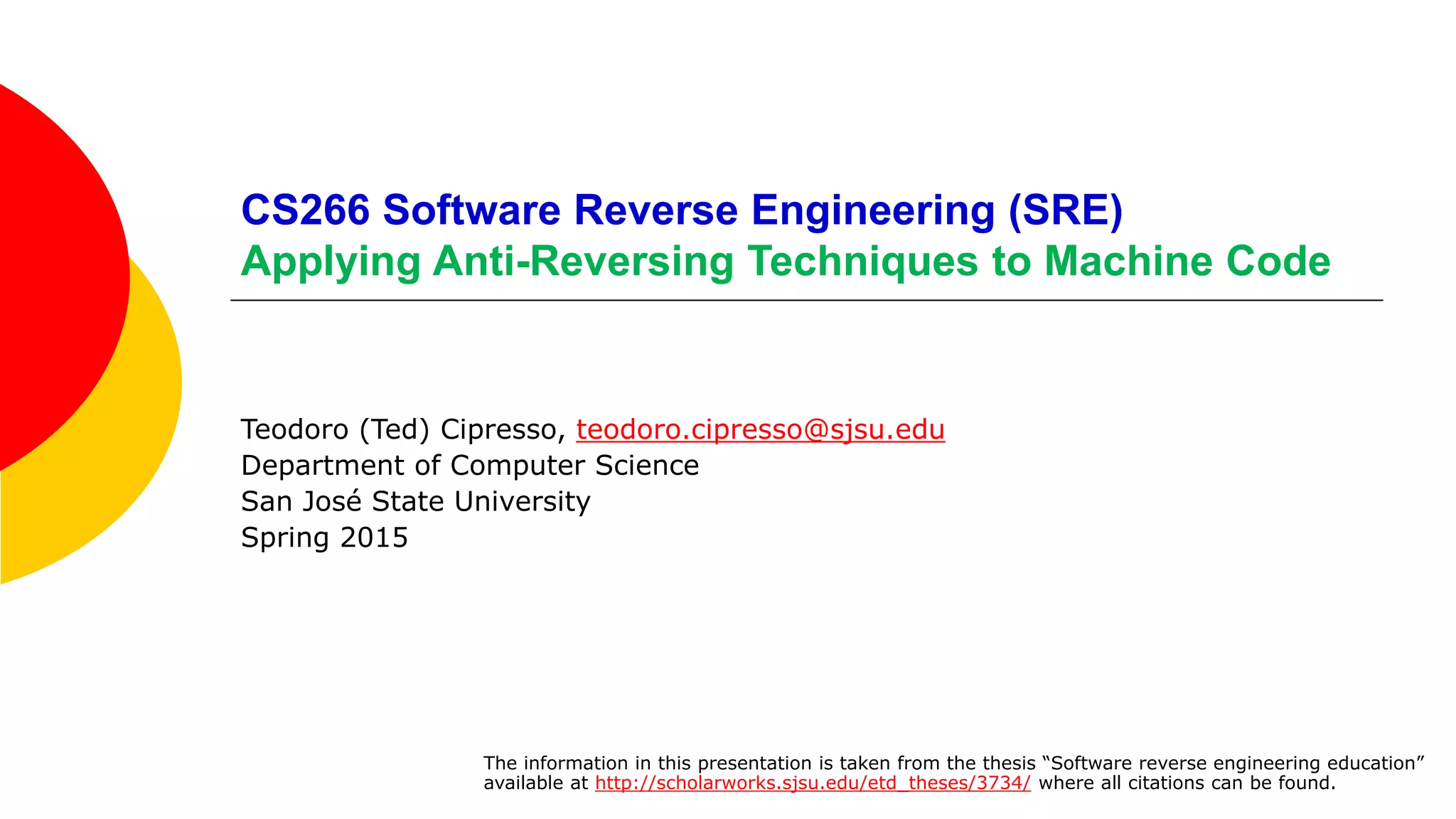
![Applying Anti-Reversing Techniques to Machine Code
Introduction, Motivation, and Considerations
Extreme care must be taken when applying anti-reversing techniques because
most techniques ultimately change the machine code.
In the end, if a program does not run correctly, measuring how efficient or
difficult to reverse engineer it is becomes meaningless [18].
Anti-reversing transformations performed on source code make a program
more difficult to understand in both source and executable formats.
These transforms can expose compiler bugs because the program no longer
looks like something a human would write.
[18] states “any compiler is going to have at least some pathological
programs which it will not compile correctly.”
2](https://image.slidesharecdn.com/5antireversingmachinecode-150312154918-conversion-gate01/75/Applying-Anti-Reversing-Techniques-to-Machine-Code-2-2048.jpg)
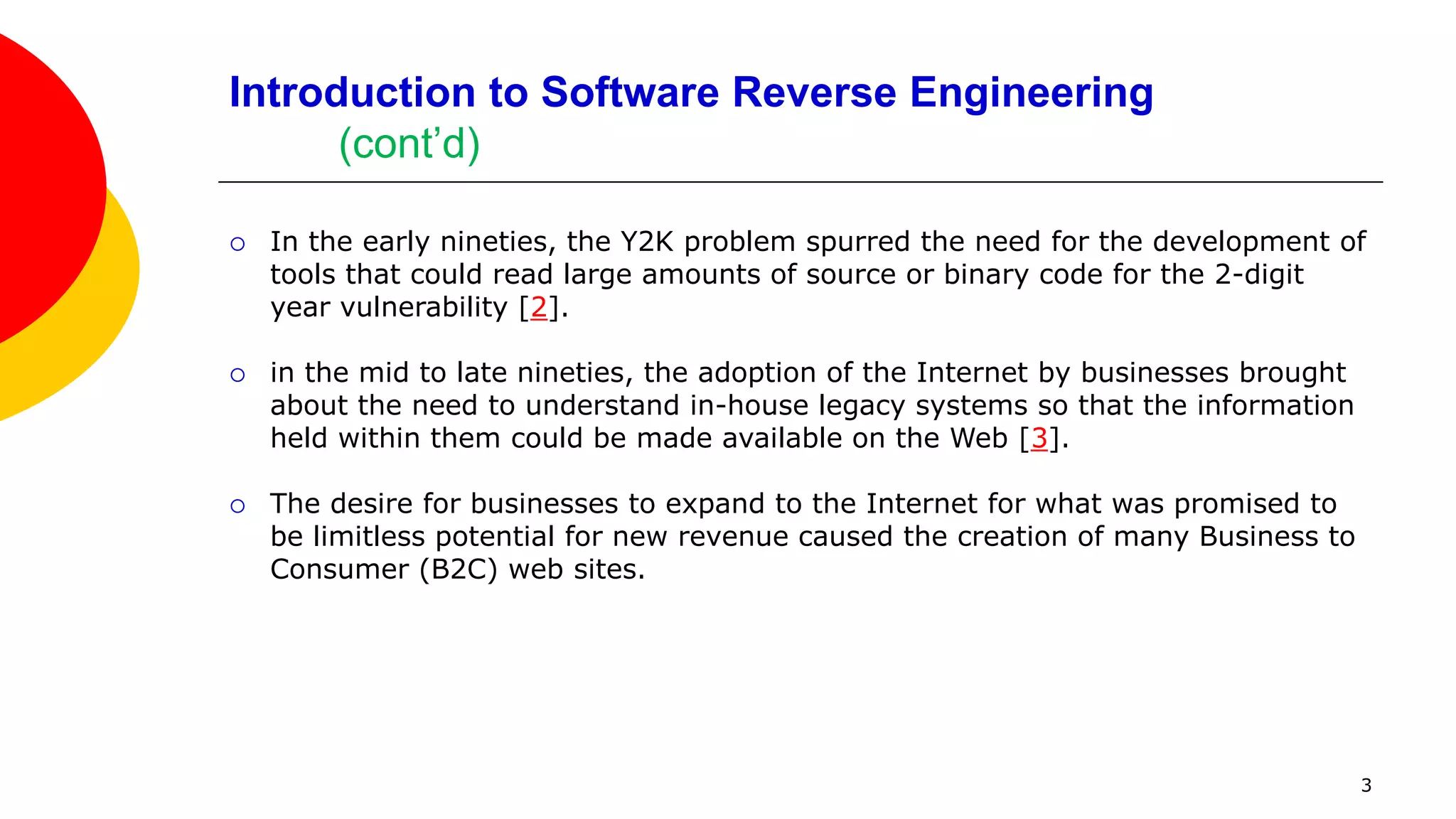
![Applying Anti-Reversing Techniques to Machine Code
Eliminating Symbolic Information in Machine Code
Eliminating Symbolic Information calls for the removal of any meaningful
symbolic information in machine code that is not important to the execution of
the program, but serves to ease debugging or reuse of it by another program.
For example, if a Windows program references functions (methods)
exported by one or more libraries (DLLs), the names of those methods will
appear in the .idata (import data) section of the program binary.
In production versions of a program, the machine code doesn't directly contain
any symbolic information from the original source code. In the executable:
Method names, variable names (etc..), and line numbers are all absent.
Only the machine instructions produced directly or indirectly by the
compiler [9] are present.
4](https://image.slidesharecdn.com/5antireversingmachinecode-150312154918-conversion-gate01/75/Applying-Anti-Reversing-Techniques-to-Machine-Code-4-2048.jpg)
![Applying Anti-Reversing Techniques to Machine Code
Eliminating Symbolic Information in Machine Code
This lack of information about the connection between the machine instructions
and HLL source is unacceptable for purposes of debugging.
Therefore most modern compilers, like GCC, include an option to include
debugging information into an executable.
The included debugging information allows a debugger to map one or more
machine instructions back to a particular HLL statement [9].
To demonstrate symbolic information that is inserted into machine code to
enable debugging of an application:
Calculator.cpp was compiled using the GNU C++ compiler (g++) with
options to include debugging information and to generate assembly source
instead of an executable (machine code).
5](https://image.slidesharecdn.com/5antireversingmachinecode-150312154918-conversion-gate01/75/Applying-Anti-Reversing-Techniques-to-Machine-Code-5-2048.jpg)
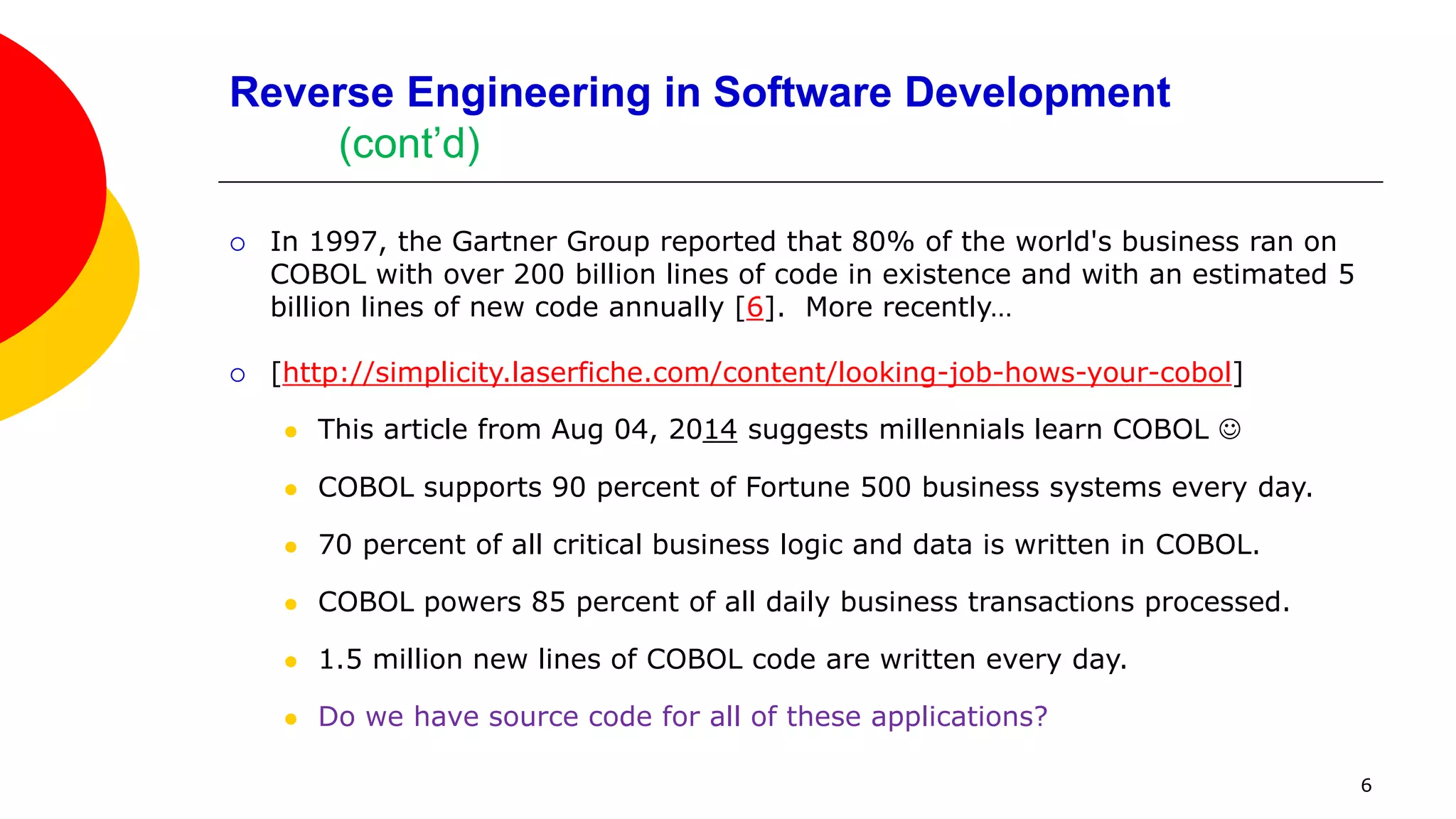

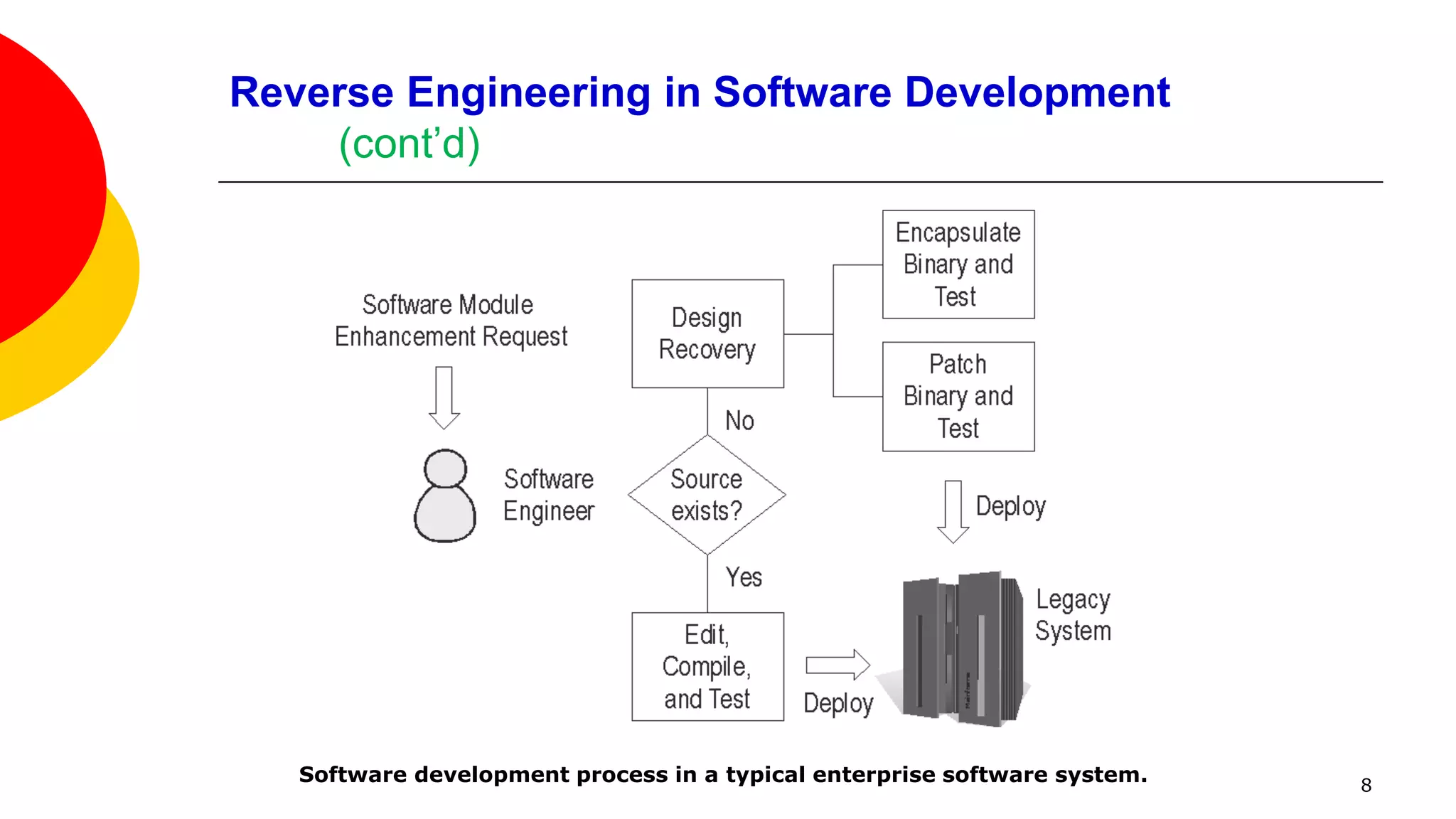
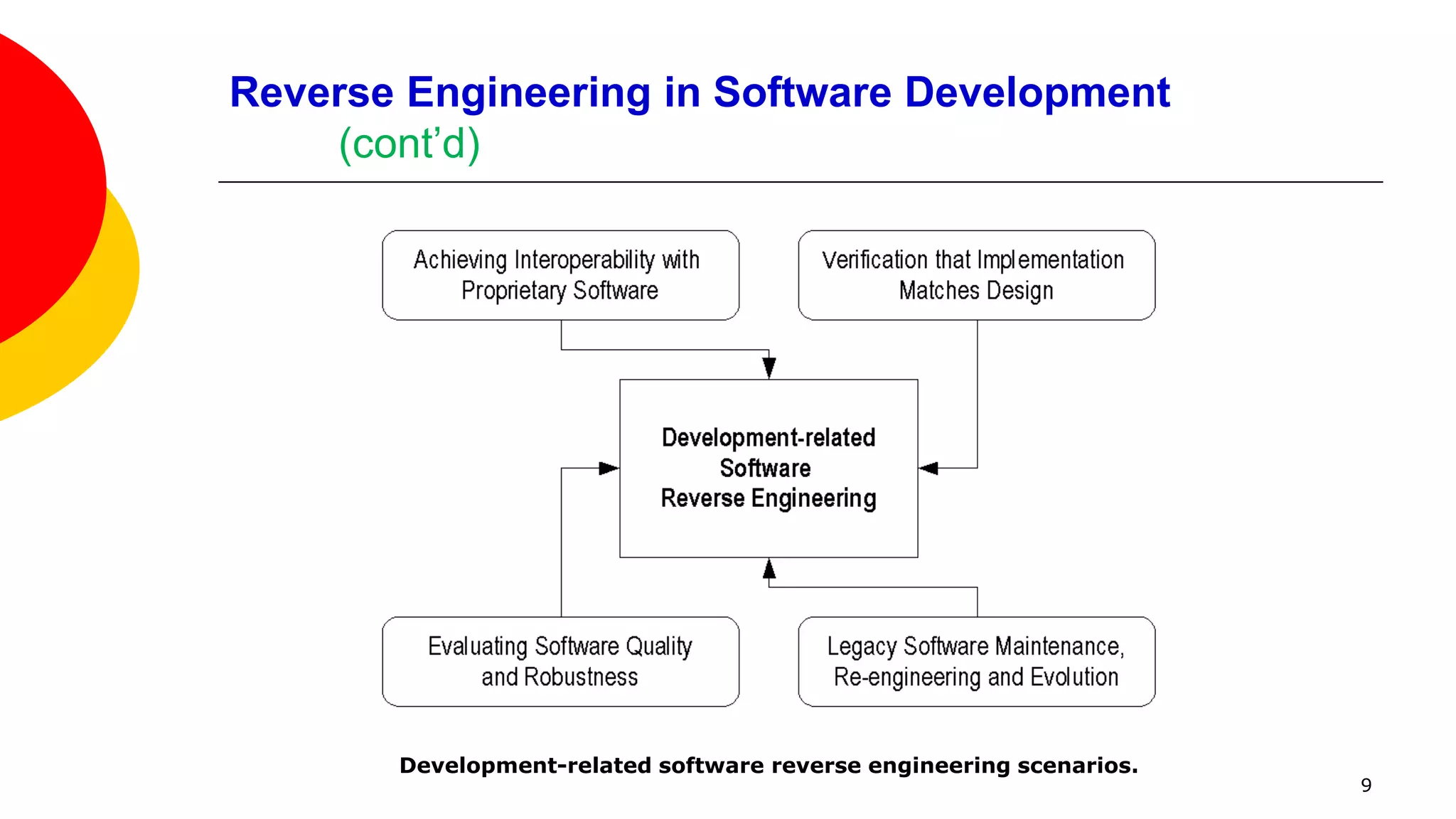
![Applying Anti-Reversing Techniques to Machine Code
Source Code Obfuscation
Obfuscating the Program calls for performing transformations to the source or
machine code that would render either code extremely difficult to understand
but functionally equivalent to the original.
When delivering software to customers, they may require the source code so
that the product can be compiled using in-house build and audit procedures.
In the likely event that the source code contains intellectual property, it can be
obfuscated without changing the the resultant machine code.
To demonstrate source code obfuscation, COBF [23], a free C/C++ source code
obfuscator was configured and given Calculator.cpp.
Stunnix C/C++ is a commercial source code obfuscator.
10](https://image.slidesharecdn.com/5antireversingmachinecode-150312154918-conversion-gate01/75/Applying-Anti-Reversing-Techniques-to-Machine-Code-10-2048.jpg)
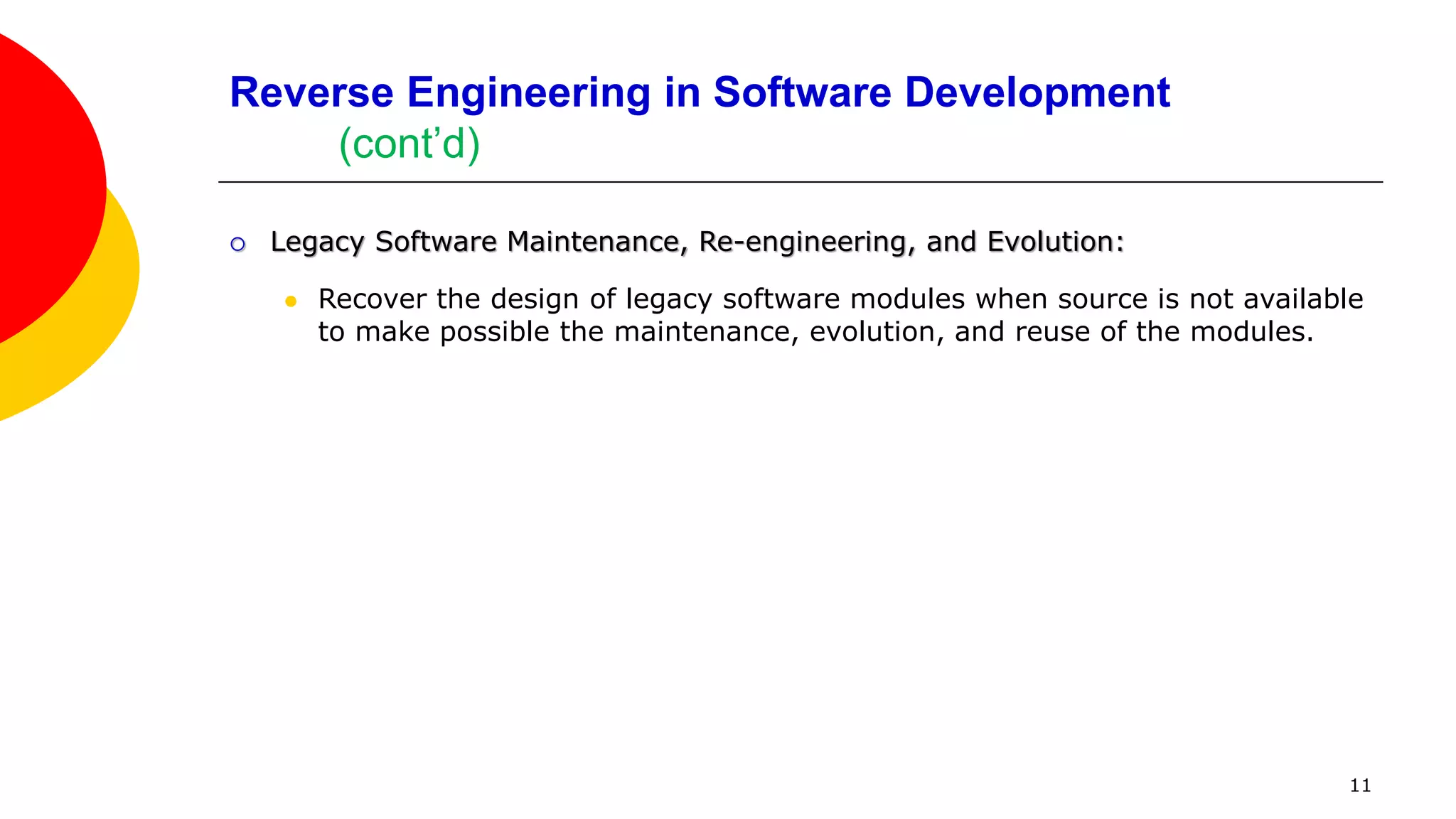
![Applying Anti-Reversing Techniques to Machine Code
Basic Obfuscation of Machine Code
[19] states “Obfuscation of Java bytecode is possible for the same reasons that
decompiling is possible: Java bytecode is standardized and well documented.”
Machine code is not standardized; instruction sets, formats, and program
image layouts vary depending on the target platform architecture.
Tools to assist with obfuscating machine code are much more challenging to
implement and expensive to acquire. (I have not found any free tools).
EXECryptor is an industrial-strength machine code obfuscator.
When applied to the machine code for the Password Vault application,
EXECryptor rendered it extremely difficult to understand.
EXECryptor fails to start in Windows 8.1 due to an anti-debug error.
12](https://image.slidesharecdn.com/5antireversingmachinecode-150312154918-conversion-gate01/75/Applying-Anti-Reversing-Techniques-to-Machine-Code-12-2048.jpg)
![Applying Anti-Reversing Techniques to Machine Code
Basic Obfuscation of Machine Code
Direct machine code obfuscations can be hard to analyze or follow, so we'll
perform obfuscations at the source code level and observe differences in the
assembly code generated by the GNU C/C++ compiler.
Success is achieved when an obfuscated program has the same functionality as
the original, but is more difficult to understand during live or static analysis.
There are no standards for code obfuscation, but it's relatively important to
ensure that the obfuscations applied to a program are not easily undone
because deobfuscation tools can be used to eliminate easily identified
obfuscations [5].
We now look at the source and disassembly for VerifyPassword.cpp, a simple
C++ program that contains a simple if-test for a password.
We then embed a simple cipher to protect sensitive constants.
13](https://image.slidesharecdn.com/5antireversingmachinecode-150312154918-conversion-gate01/75/Applying-Anti-Reversing-Techniques-to-Machine-Code-13-2048.jpg)

